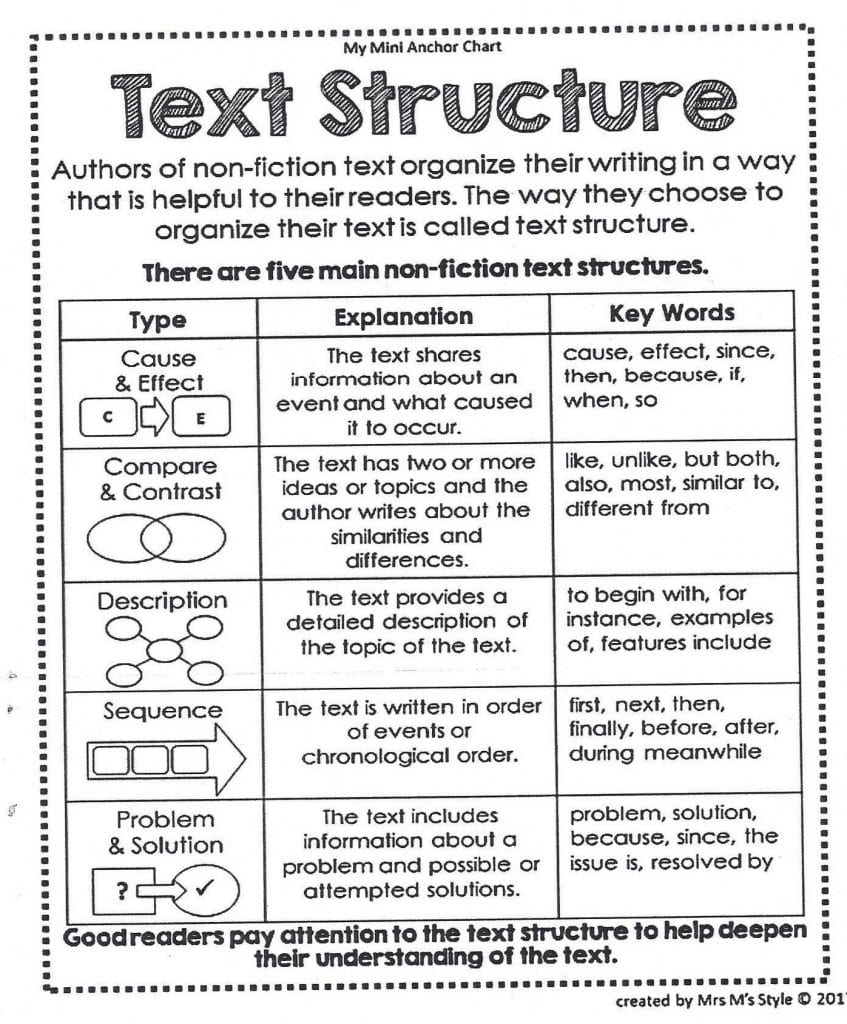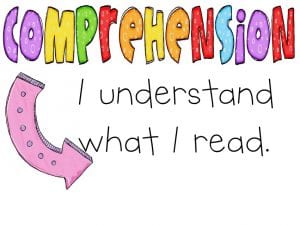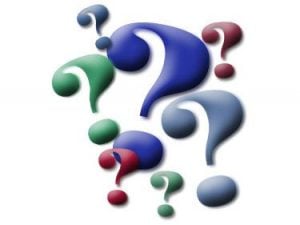by C. Elkins, OK Math and Reading Lady
I have come to realize just how important knowledge of text structures  is to almost all of the other comprehension skills and strategies. So that will be my focus for the next few posts — how this text structure connection relates to main idea, summarizing, note-taking, and writing. This post will feature the compare and contrast text structure (and some resources at the end of this post).
is to almost all of the other comprehension skills and strategies. So that will be my focus for the next few posts — how this text structure connection relates to main idea, summarizing, note-taking, and writing. This post will feature the compare and contrast text structure (and some resources at the end of this post).
What are the text structures? Most sources consider the following 5: (Picture from Mrs. M’s Style. Here’s the link on Pinterest: Text Structure Mini Anchor Chart)
- Compare and Contrast
- Cause / Effect
- Sequence
- Details / Description
- Problem / Solution
When I see reading texts that indicate the week’s skill is text structure, I cringe a little bit. Why? Well, if you are teaching all 5 of them – that’s too much to digest in one week. Here’s what I think is much more practical: Teaching about text structures should occur with each and every reading selection — and refer to the structure that is most evident regarding that selection.
Here’s an example of what the teacher might say: “This week we are reading an article titled Whales and Dolphins. This article will compare and contrast whales with dolphins. Compare and contrast is a text structure in which the author will tell ways the whales and dolphins are alike and different from each other.”
How can I further connect this to comprehension and text structure?
- Venn Diagrams or T-charts are helpful graphic organizers regarding compare/contrast text structure. Student can take notes using the graphic organizer. The idea is that with frequent use, students can eventually visualize this graphic organizer model in their head. Then this visual model serves as a thought organizer when they are not able to physically utilize one.
- I can direct my questions to focus on this text structure such as: “On page 37, can you find one way the author compared whales to dolphins?” “On page 39, the author told 3 ways the whales and dolphins are different. What did he say?”
How can I further connect this to help students with the main idea and/or a summary of a compare/contrast article? Using information from notes on the Venn Diagram, students can use sentence frames like these:
- This article compared _____________ to ______________. (main idea)
- This article compared ___________ to _____________. Whales and dolphins are alike because _____________ and they are different because ___________________. (summary)




 I might use skills about character analysis such as paying attention to their words and actions to help me “see” what is really going on. Another example: I might use skills about noting details while reading a passage to make the details “come alive” as I try to picture them in my mind. (See link to strategy posters at the end of this post.)
I might use skills about character analysis such as paying attention to their words and actions to help me “see” what is really going on. Another example: I might use skills about noting details while reading a passage to make the details “come alive” as I try to picture them in my mind. (See link to strategy posters at the end of this post.)